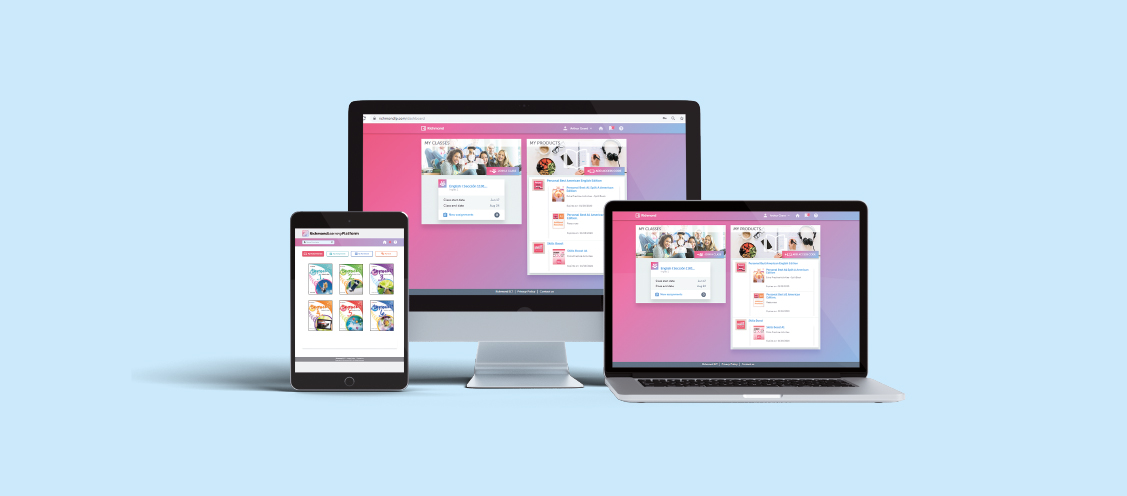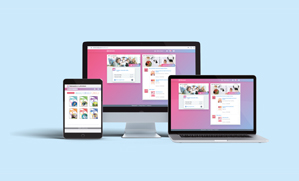Moving into online operations
Over the last eight months – to a great extent because of the pandemic, but also just before that time - we have seen the fastest growth in online education in history. With this new surge, there are many new tools coming onto the educational market and a whole host of companies are rushing to improve and adapt their technologies. However, for those of us working in the ELT, the most useful technology is already available and staring us in the face: The platforms provided by publishers to support their course books is probably the ideal solution to many of the challenges facing educators in the current climate of having to give classes online
Two key tools for effective online lessons
Online classes essentially require two key components. The first is a live session. For these, you need a program (also called ‘virtual classrooms’) such as Zoom or Google Meet that allow you to connect with your students for synchronous lessons. To simulate the physical classroom, they often include interactive whiteboards, screen sharing options, chat windows, breakout rooms and more.
The second key component of any online course is a platform (also known as a ‘virtual learning environment’ or VLE). You are probably already familiar with some VLEs: Edmodo1, Moodle, Schoology and Blackboard. They provide a place for the teacher to share content with their students. For example, if the students need to watch a video in preparation for the synchronous class they are going to attend, or if the teacher wants them to do homework after the live session, then the VLE is an ideal place to share this material so the students can access it.
VLEs also allow teachers to build activities and exercises around the content shared in live sessions. Most of them include options for designing quizzes, setting up discussions, creating surveys and polls etc. They often have programs that allow you to track the students’ activities, and store the marks of all the exercises that the students complete.
These two components are so important, that I don’t work with any VLEs that don’t include them. With them, my work is more fluid and efficient, and yours will be, too. What I’m trying to say is that there are a lot of different popular apps and software that sound very attractive and engaging; however, what will help you more than anything else is to get to know the platform recommended to you by your school, or the publisher you work with. The VLEs that Richmond offer, for instance, are very complete and make your job much easier, as they anticipate most of your needs. Let me explain.
Making teachers' lives easier
One challenge of generic VLEs is that they are empty vessels: often the basic structure has been created, but no content has been added. In these cases, you have to spend time uploading all of your material for your course, including core curriculum, the activities, videos, links, audio, articles, etc. You also have to build the exercises and quizzes around this content. You may have already experienced how time consuming this is.
This is where the publishers’ platforms come in. Instead of choosing one of the generic VLEs, you can opt to make use of the platforms that the publishers have created and that are synchronised with the coursebook you are using. Richmond has been building platforms to support their books for many years, but until recently, most teachers have chosen to work solely from the physical coursebook.
This is beginning to change, because, especially during the pandemic, teachers realised that Richmond VLEs saved them time, and made their lesson planning more efficient; it also helped to make the lessons more engaging and connected. The Richmond VLEs also support all their books and provide a huge range of materials to use, plus additional games and other dynamic activities.
Tracking, checking and assessing
Don’t be fooled, VLEs such as the Richmond Learning Platform are not just about saving time and energy. They provides a myriad of benefits. For instance, they track what the students do, so you can quickly check to see if your students have completed an activity - or not - and what the score is that they received. In fact the tracking options can provide information not only at a student level, but can give data concerning the overall performance of the class, as well.
The Richmond VLEs also help teachers receive the all-important formative assessments. They automatically check many quizzes and activities so a) students get immediate feedback, and b) the teacher can focus on the results of the activities, rather than spending time on correcting tasks that technology can do more efficiently. In other words, the results will indicate whether you need to continue with the same content or if the students have mastered the task and so you can move forward.
There will be an avalanche of new technologies coming onto the market over the next year or so, but my feeling is that learning how to use the technology that is already available will be the thing which serves you best.
Richmond is dedicated to finding and sharing key ideas that will help you to move forward towards innovation. In the next blog, we’ll share ways to help you to maintain personal contact with your students, even if you need to continue giving classes online. In the meantime, below are some resources we’ve gathered that can help you to engage your students in their studies in fun and creative ways.









